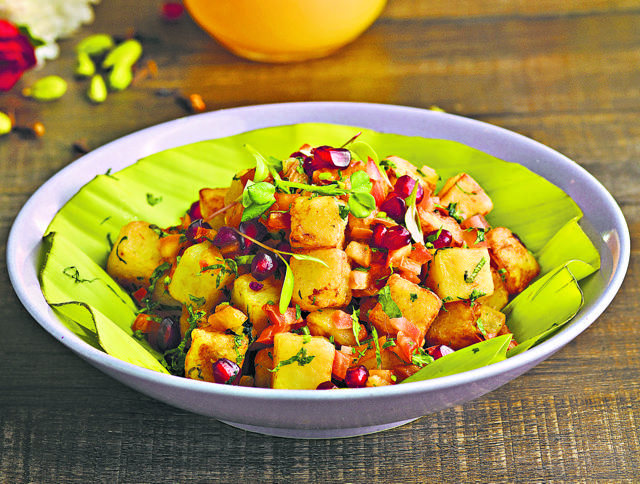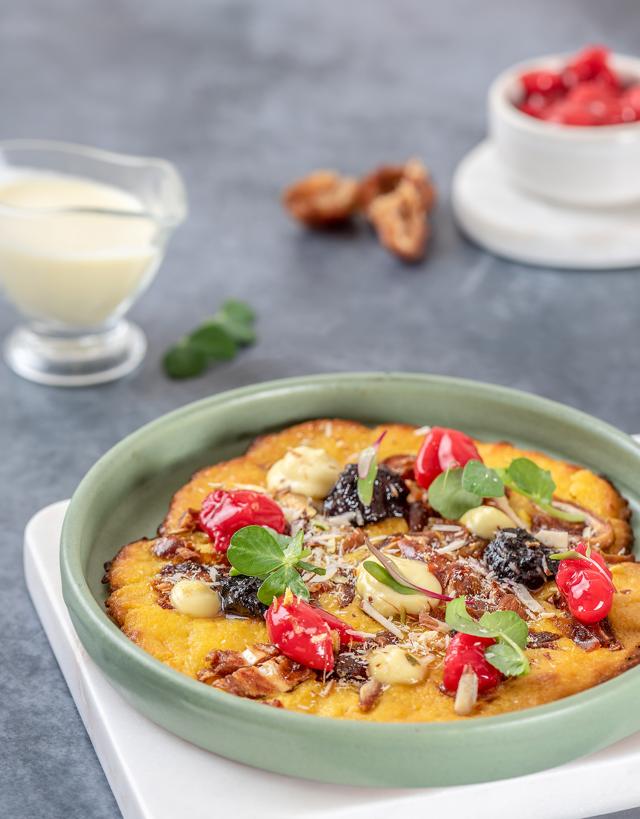When it comes to Navratri, every element is special, be it the pandals, outfits or representations of ancient tales through music and dance. And when the festive season is here, food can’t be far behind! Many people observe fasts on all nine days of the festival, and only consume special delicacies made of kuttu ka atta, sabudana, sendha namak (rock salt), etc. But, gone are the days when vrat ka khana is considered boring and bland, as many Navratri specialties have undergone a gourmet twist.
“We have a Navratri special menu for two decades now. Over the last two to three years, we have started giving a twist to the fasting food at Samavar, The Coffee Shop, and it has got a positive response. This year, we have samakya chawal firni, among other items. It has countless health benefits and can be prepared at home without much fuss,” says chef Vikas Anand from The Ashok Hotel, ITDC, New Delhi.

From raw banana kebab to cashew cheesecake, a host of dishes are appealing to foodies, as they are not only innovative but also within the framework of ingredients that are generally used during this season. “From the standard Navratra Thali to a sit-down nine-course Navratra table I did last year, we have come a long way in making this celebration gourmet. While I started cooking professionally 20 years ago, Navratra food was just considered an option for those who are fasting. Now, it is a feast and there is huge impetus of flavour, taste and oomph. For me, fruit and dairy have been two very essential categories while preparing Navratra food,” says chef Tarun Sibal.
Every chef follows a style with fasting food. Amitabh Kumar, corporate chef, Anardana, says, “Whenever I am experimenting with fasting food, I always start with a single ingredient and then start building around it. Lets say, samak ke chawal, it can also be used to make dosa, uttapam, and even fried rice.”
At home, one can try fritters with amaranth grains, instead of sabudana fritters, quinoa flour poori instead of pooris with buckwheat flour, and vegetable dimsums using chestnut flour. “The challenge is to get a proper taste of what we are habitual of eating. It is important to make fasting easy for people than limiting them to what one can eat. This Navratri, we will be working on quinoa pulao, burrata, amaranth ki chaat, makhane ki sabzi, sukhe gulab, sabudane ki kheer and more,” says Akshay Bhardwaj, head chef, AnnaMaya.
If one is habitual of a certain dish, chefs recommend experimenting with an acceptable substitute which can impart similar flavours. “Finding ingredients that can be used as a substitute is one way of taking this challenge head on. For example, I once created kadhi pakoda and used singhara flour to cook pakodas, and chestnut flour,” shares Ashish Singh, corporate chef, Dhansoo Café.

Sharing the best ingredients and techniques that one can use to prepare vrat ka khana, chef Natasha Gandhi says: “I try to resort to baking over frying, and use fruits and nuts to add more flavour. Instead of making sabudana khichdi, one can make puffed sabudana bhel. Imagine sabudana pakoda served as a thalipeeth pizza, or savoury rajgira muffins! Rajgira flour is my favourite and works very well when kneaded with hot water. One can make kachori, samosa or even pancakes using it.”
Author tweets @ruchikagarg271


